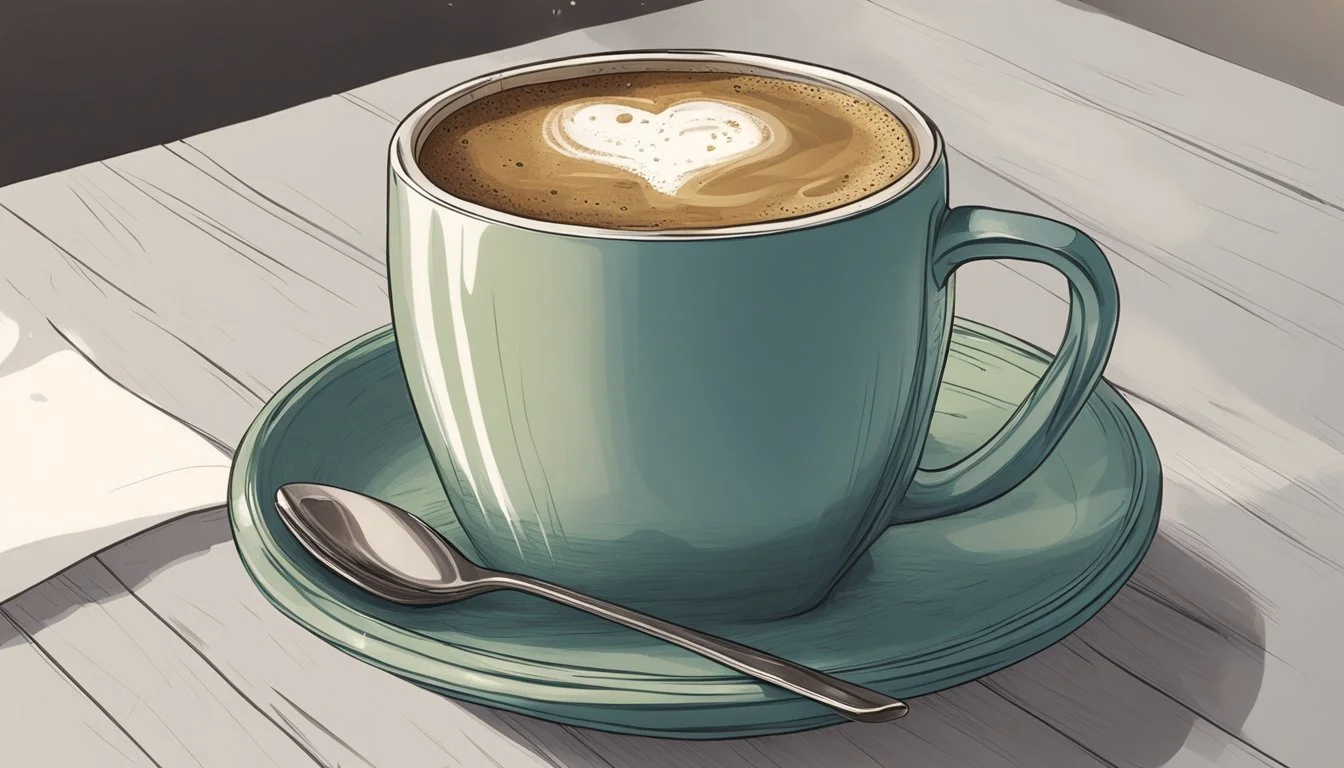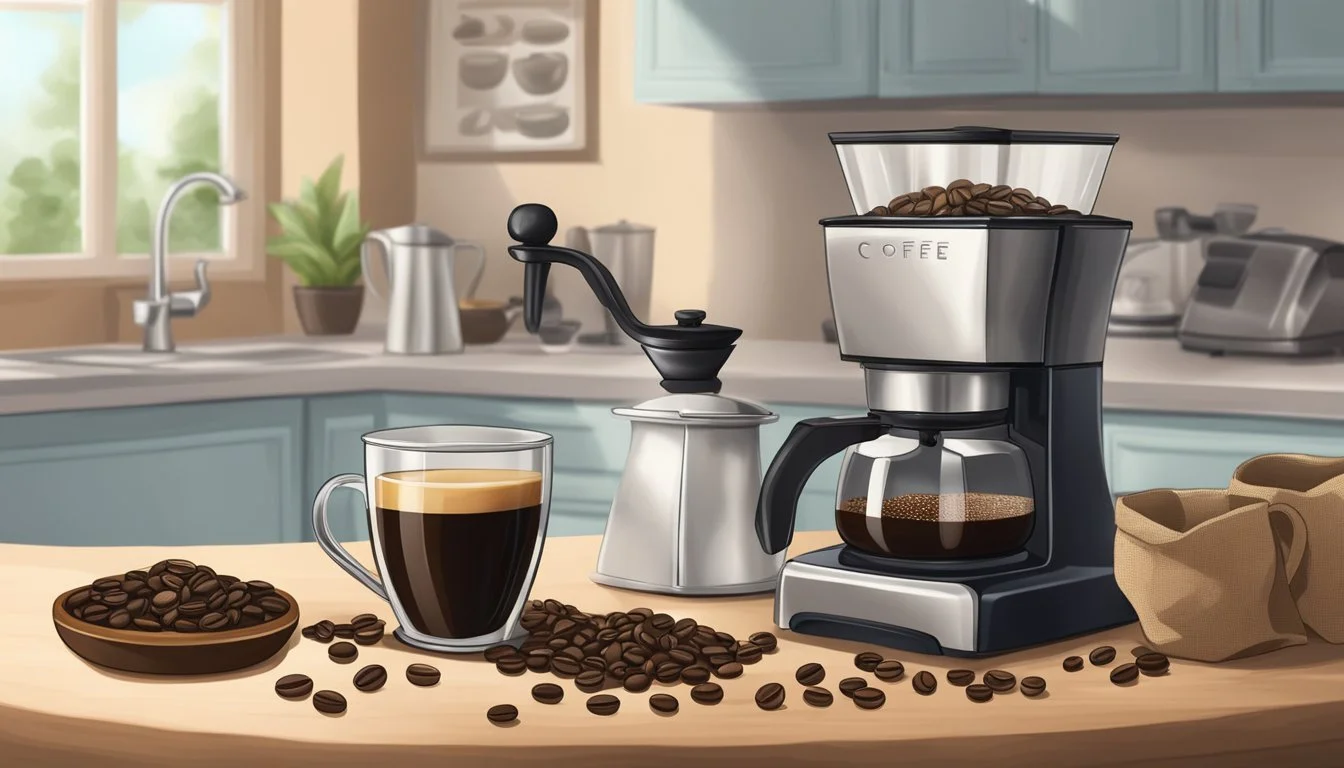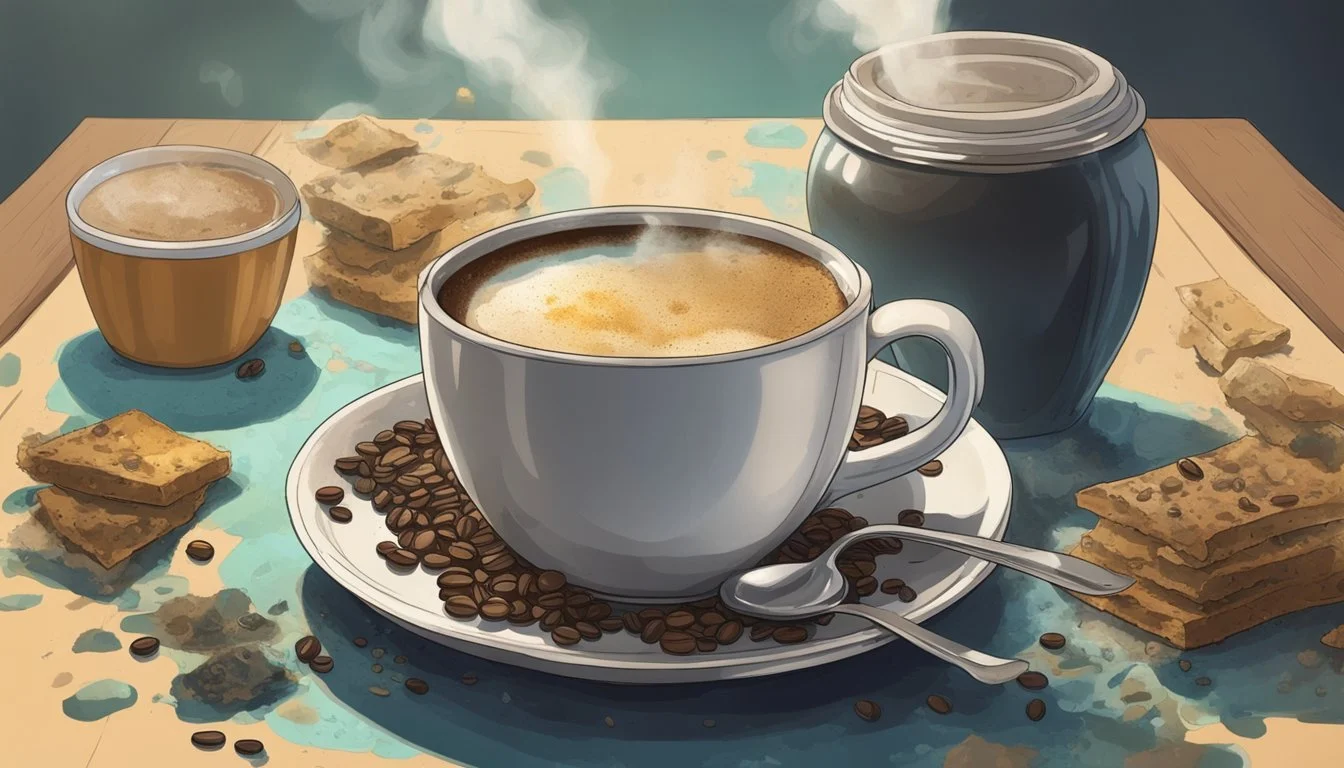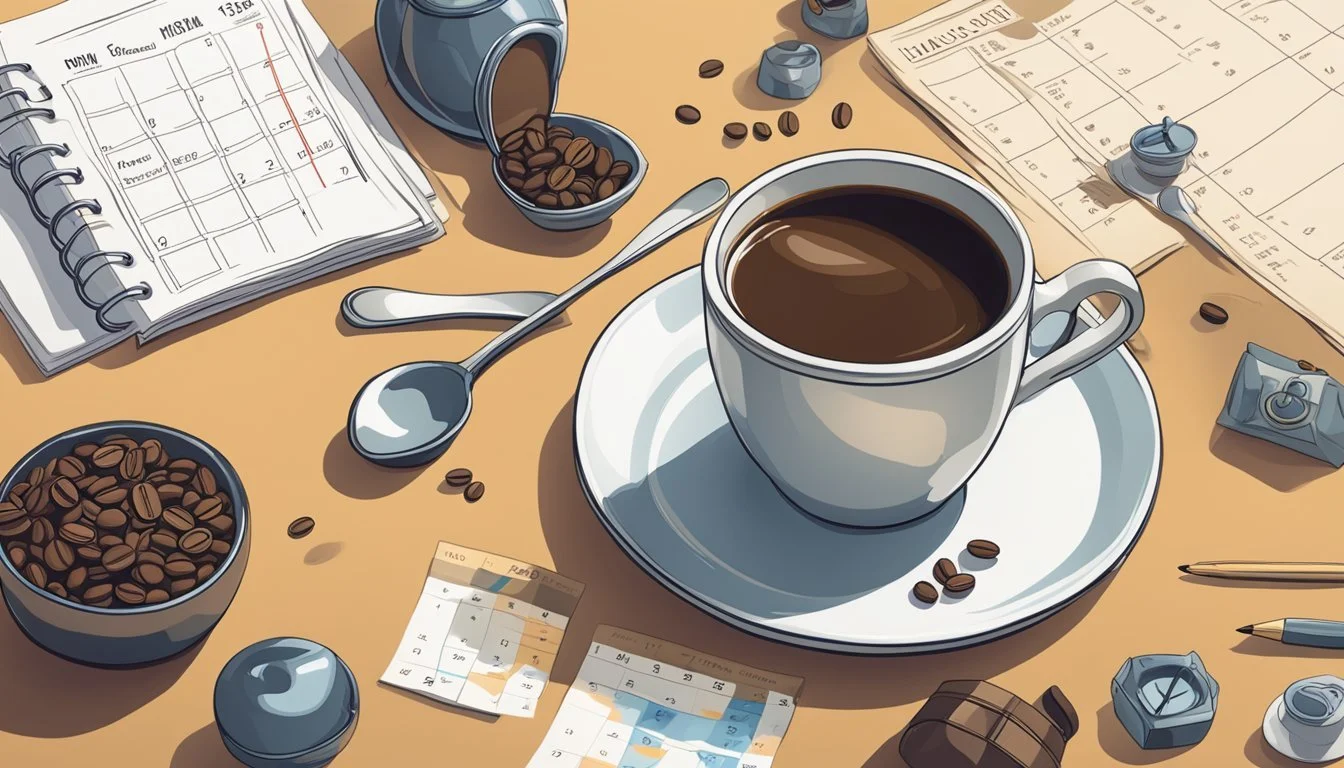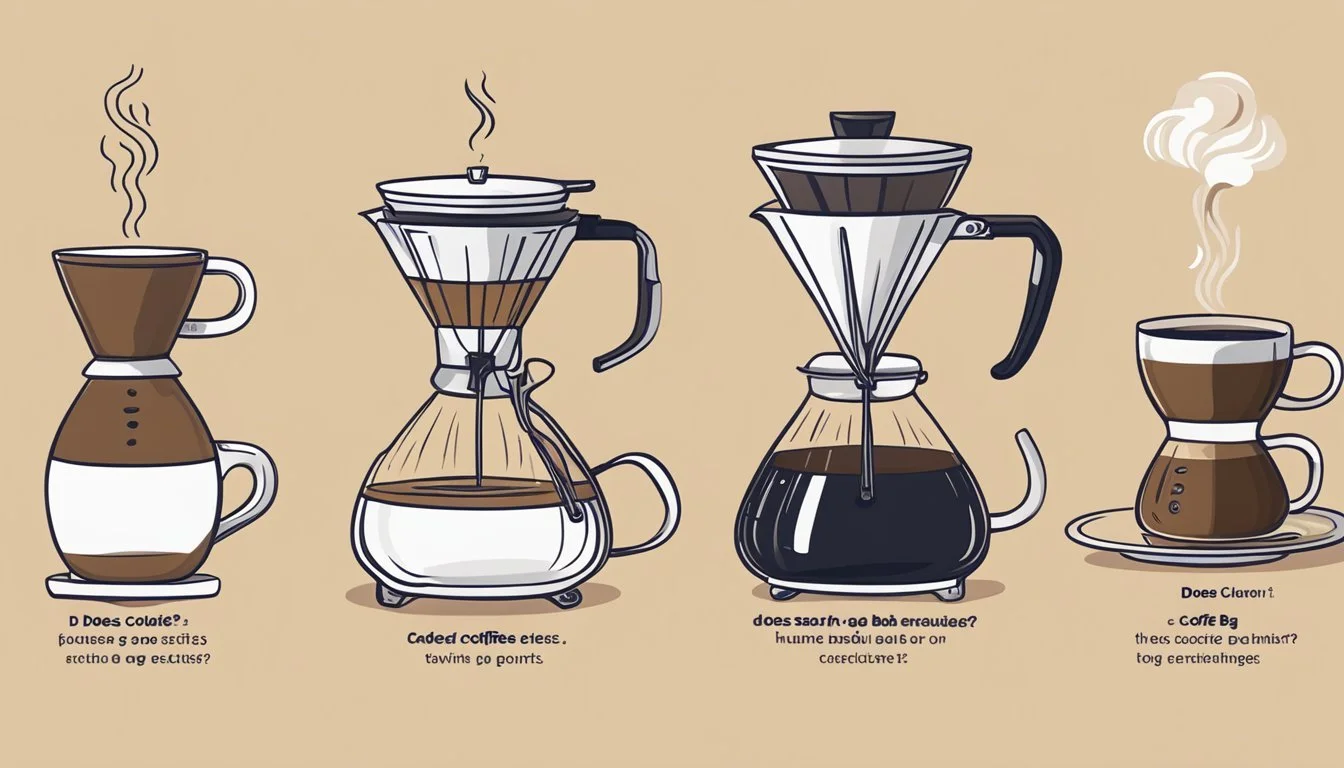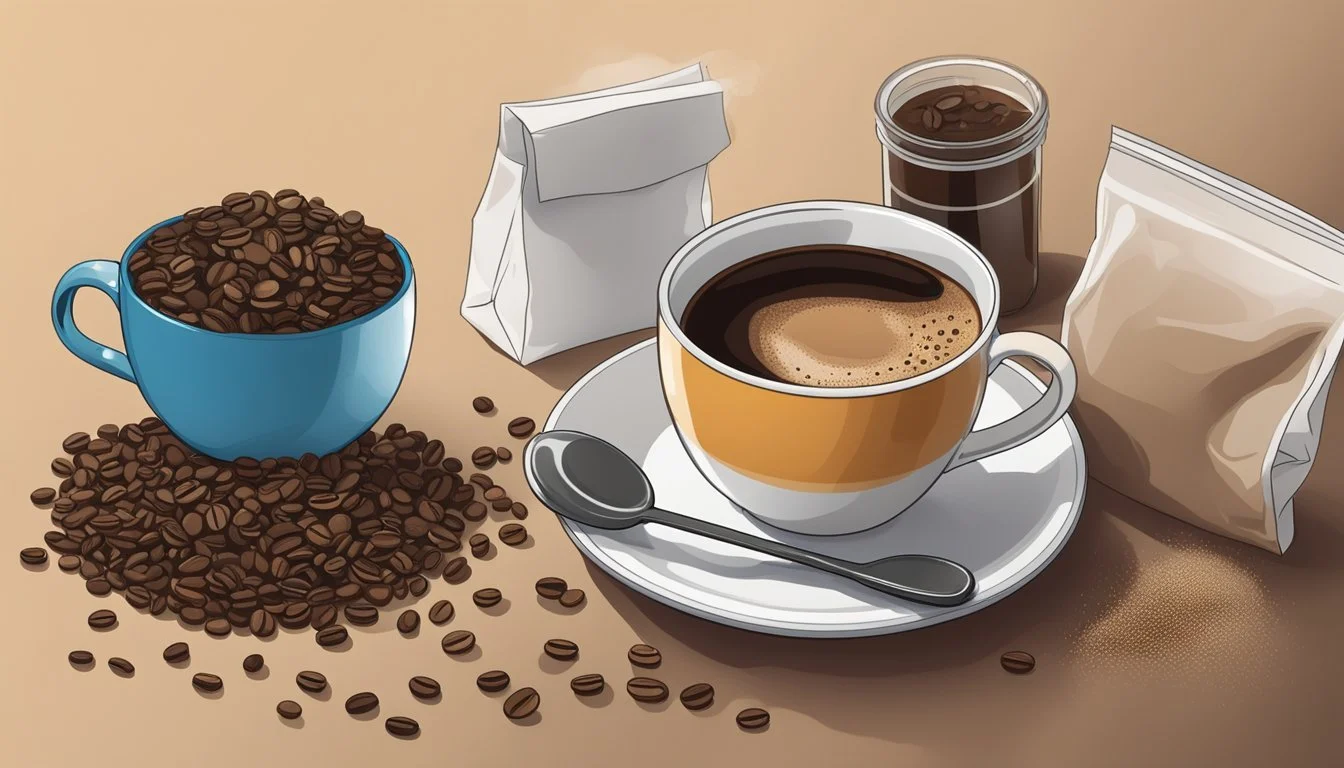Does Coffee Go Bad?
Understanding the Shelf Life of Your Brew
Coffee is a staple in many households and offices around the world, prized for its stimulating effects and rich, complex flavors. However, like many natural products, coffee does not maintain its peak quality indefinitely. The shelf life of coffee varies depending on its form—whole beans, ground coffee, brewed coffee, or cold brew—and the conditions in which it is stored. Proper storage is crucial to extending the longevity of coffee and maintaining its best taste and aroma.
As a hygroscopic substance, coffee absorbs moisture from the surrounding environment, which can lead to staleness and loss of flavor. Oxidation, light, and heat are also factors that deteriorate the quality of coffee over time. Therefore, understanding how these elements impact coffee and practicing proper storage techniques are key to enjoying a consistently flavorful cup. It is generally accepted that coffee does not "go bad" in the way perishable food does, meaning it doesn't spoil or become unsafe to consume, but it does lose its freshness and optimal taste profile as time progresses.
Understanding Coffee Freshness
Coffee freshness is integral to its quality, impacting both the taste and aroma. Freshness is defined by the coffee’s peak flavor profile, which is influenced by several factors and can be gauged by distinct quality indicators.
Scientific Research
Researchers consistently find that coffee’s freshness is predominantly determined by the retention of volatile compounds responsible for its aroma and flavor. Once roasted, coffee begins a gradual process of decline as these compounds dissipate. Scientific studies have shown that the rate of this decline is accelerated by exposure to air, light, heat, and moisture.
Factors Affecting Freshness
Several factors have a profound effect on the freshness of coffee:
Roast date: The closer the brewing date is to the roast date, the fresher the coffee will be.
Bean form: Whole beans retain freshness longer than ground coffee due to reduced surface area. Ground coffee’s freshness can peak within minutes of grinding.
Storage: Airtight and opaque containers can extend freshness by protecting against air, light, and moisture.
Temperature: Coffee should be stored in a cool, dry place to slow the freshness degradation process.
Quality Indicators
One can identify the freshness of coffee through a few observable quality indicators:
Aroma: A fresh coffee emits a strong, rich scent, whereas stale coffee may have a flat or musty aroma.
Taste: Fresh coffee offers a vibrant and complex range of flavors, while a stale sample tends toward dull or cardboard-like notes.
By understanding these elements, consumers and connoisseurs alike can better navigate the nuances of coffee freshness and enjoy a superior coffee experience.
Shelf Life of Coffee
The longevity of coffee can vary greatly depending on its form—whether whole beans, ground, or instant—and its storage conditions.
Whole vs Ground Beans
Whole coffee beans typically maintain their freshness for one month when stored in a cool, dark place inside an airtight container. Once ground, coffee beans should be used within one to two weeks to enjoy their optimal flavor, as they are more susceptible to oxidation.
Roasted Coffee Shelf Life
Roasted coffee beans have a shorter shelf life compared to their unroasted counterparts due to the release of oils and the start of the oxidation process upon roasting. If stored properly, roasted coffee beans can last for approximately 3-5 months. To extend their shelf life, storing them in an airtight container away from light, heat, and moisture is crucial.
Instant Coffee and Coffee Pods Shelf Life
Instant coffee boasts an exceptionally long shelf life, ranging from 2 to 20 years when kept unopened in its original packaging. Once opened, keeping it in an airtight container can help maintain its quality. Coffee pods, due to their sealed packaging, can generally last for up to one year beyond their "best by" date if not exposed to air or moisture.
Optimal Coffee Storage
The freshness and flavor of coffee are heavily influenced by storage conditions. Proper storage solutions are paramount to preserve its quality.
Storing Whole Beans
Whole beans retain their flavor and freshness longer when stored in an airtight container away from heat, light, and moisture. A pantry or cupboard serves as the ideal location, offering a consistent, dark environment. Containers with a one-way valve are especially effective as they allow gases to escape without letting air in.
Storing Ground Coffee
Once coffee is ground, its surface area increases, making it more susceptible to oxidation and flavor loss. Ground coffee should be stored similarly to whole beans, in an airtight container in a pantry or cupboard. For maximum freshness, limit the time between grinding and brewing.
Refrigeration and Freezing
Refrigeration can extend the life of cold brew concentrate, lasting 7-10 days when stored properly. However, frequent changes in temperature can cause moisture build-up, so these methods are not recommended for beans or grounds. Freezing whole beans is a viable option for long-term storage, but it should be done in an airtight container and the beans should be allowed to come to room temperature before opening to prevent condensation.
How to Tell if Coffee Has Gone Bad
When assessing if coffee has gone bad, individuals can perform a visual and smell inspection and conduct a taste test. These methods are reliable for identifying stale coffee, signs of mold, and unpleasant odors which are indicative of expired coffee.
Visual and Smell Inspection
One can visually inspect coffee for mold, which typically appears as white or greenish fuzz on the surface. For whole beans, they should check for a dull appearance, as fresh beans have an oily sheen. In terms of smell, fresh coffee has a strong, pleasant aroma, whereas bad coffee may produce little to no scent or an off-putting odor. An absence of aroma or the presence of foul odors suggests that the coffee is old or has gone bad.
Taste Test
Performing a taste test can provide definitive evidence of the quality of the coffee. The individual should prepare a small amount of coffee and taste it, paying attention to the flavor profile. Fresh coffee has a rich and full-bodied taste, while coffee that has gone bad may taste sour, rancid, or flat. If the coffee induces a negative reaction on the palate, it is likely that the coffee beans or grounds are past their prime.
Potential Health Impacts
When considering the health impacts of coffee, it is essential to differentiate between the effects of fresh coffee and the potential risks associated with consuming coffee that has gone bad.
Foodborne Illness from Coffee
Foodborne illnesses can arise from consuming coffee that has been contaminated, especially if the coffee is left out for prolonged periods which can promote bacterial growth. Improperly stored coffee, whether it's ground or brewed, can provide a medium for bacteria and mold. To avoid foodborne illness, it is crucial to store coffee in airtight containers and consume it within a reasonable timeframe.
Signs of Contamination:
Unusual odor or appearance
Visible mold growth
Off-tasting coffee
Long-term Consumption of Stale Coffee
Stale coffee may not necessarily lead to immediate health risks such as foodborne illnesses, but long-term consumption has possible implications for health. Stale coffee can develop a rancid taste due to the oxidation of fats in the coffee beans, which may affect digestive comfort for some individuals.
Health Considerations with Stale Coffee:
Lessened nutritional benefits compared to fresh coffee
Potential for digestive discomfort from rancid oils
It is always best to consume coffee when it's fresh, not only to enjoy its flavor and aroma but also to minimize any potential health risks.
Maximizing Coffee Enjoyment
To enhance the quality and taste of your coffee, it is crucial to follow best practices for maintaining freshness and preventing spoilage. Proper techniques in brewing and storage can significantly affect the overall flavor of your coffee.
Best Practices for Fresh Coffee
Selecting Quality Beans:
The starting point for a great cup of coffee is the selection of fresh roasted coffee beans. Look for beans that have a recent roast date and buy them in small quantities to ensure they remain at their peak flavor for as long as possible.
Water Temperature: Aim for a water temperature between 195°F to 205°F for optimal extraction.
Grind Size: Adjust the grind size according to the brewing method; use a finer grind for espresso and a coarser one for French press.
Brewing Time: Time the brew to avoid over or under extraction. Most methods call for brewing between 2 to 5 minutes.
Preventing Spoilage and Wastage
Storing Brewed Coffee:
Brewed coffee is best enjoyed immediately but can be stored for short periods:
At room temperature, consume within 4 hours to enjoy its full flavor.
If refrigerated, consume within 3-4 days, especially for cold brews, which can last up to 7-10 days.
Adding Milk to Coffee:
Coffee with milk should be consumed promptly. Milk can spoil faster and alter the taste of the coffee if left at room temperature for too long. If refrigerated, consume it within 1-2 days.
Proper Storage of Coffee Beans and Grounds:
Keep them in a cool, dark place in an airtight container.
Avoid exposure to light, heat, moisture, and strong odors to prevent the loss of flavor and aroma.
Special Considerations
The way coffee is stored and the particular type of coffee can significantly influence its shelf life. Certain environmental factors can hasten spoilage, while the unique traits of various coffee varieties may also dictate specific storage needs.
Factors in Coffee Spoilage
Several conditions accelerate the spoilage process in coffee, making it lose its freshness and flavor. Key factors include:
Moisture: It is detrimental to coffee preservation. Coffee should be stored in a dry environment to prevent the growth of mold and bacteria.
Heat: Elevated temperatures increase the rate of chemical reactions, leading to faster degradation of coffee beans and grounds.
Light: Direct sunlight or bright light can cause the coffee to go stale due to the breakdown of essential coffee compounds.
Oxygen: Coffee's greatest enemy is oxygen which leads to oxidation, turning coffee stale.
These factors contribute to the speed at which coffee becomes stale and loses its optimal flavor profile.
Unique Coffee Varieties
Different coffee varieties have varying levels of resilience to spoilage:
Specialty Varieties: These are often more delicate and can require stricter storage conditions to maintain flavor.
Commercial Blends: These may have a longer shelf life due to the processing methods but are still susceptible to spoilage under improper conditions.
Understanding the different requirements of coffee varieties is crucial for preserving their flavors and properties.
Frequently Asked Questions
In addressing common concerns, this section zeroes in on optimal practices for coffee preservation and clarifies confusion surrounding expiration and best-by dates.
Preservation Methods
Storing coffee correctly is crucial in maintaining its freshness and flavor. Here are specific guidelines:
Whole Beans: They should be kept in an airtight container, away from heat, moisture, and light, extending their freshness for 6 to 9 months.
Ground Coffee: It has a shorter shelf life due to a greater exposure to oxygen and should be used within 3 to 5 months for optimal taste.
Handling Expiration and Best-by Dates
The meaning and implications of these dates differ:
Best-by Date: Indicates when coffee will likely start to lose flavor, not a point of spoilage.
Expiration Date: Less common on coffee; if present, signifies when the product might no longer offer the optimal quality but is not necessarily unsafe after this.
Facts to remember:
Coffee doesn’t “go bad” in the way perishable food does, but taste quality diminishes.
The coffee is usually safe to consume after these dates but with potentially less desirable flavor.
Innovative Tips and Tricks
When it comes to preserving the freshness of coffee, both innovative storage solutions and creative reuse can significantly extend its utility and enjoyment.
Coffee Concentrate Storage
Coffee concentrate can offer the same rich flavor as freshly brewed coffee when stored correctly. To maximize freshness, one can freeze the concentrate in an ice cube tray. This ensures portion-controlled coffee cubes ideal for quick iced coffee drinks. Once frozen, transferring these cubes to a vacuum-sealed bag and keeping them in the freezer can keep the coffee fresh for extended periods; it is vital to ensure the bag is as airtight as possible.
Reusing Coffee Grounds
Rather than discarding used coffee grounds, they can find a second life. For garden enthusiasts, grounds can serve as a nutrient-rich fertilizer for plants. Additionally, placing dried grounds in a small, permeable bag and using them as a natural deodorizer for refrigerators or closets is an innovative reuse strategy. If one enjoys making a cold brew, they can also repurpose grounds by steeping them in cool water for an extended period to create a less acidic, smooth beverage.
Brewing Methods and Coffee Types
Brewing methods and coffee types significantly influence the shelf life and freshness of coffee. The choice between using whole beans or pre-ground coffee, as well as selecting the appropriate brewing technique, can either enhance or detract from coffee's flavor profile and longevity.
Impact on Shelf Life and Freshness
Whole Beans: Freshly roasted coffee beans, when stored properly, maintain their freshness for about 2-3 weeks. Whole beans have a longer shelf life because their surface area is less exposed to oxygen, which is a key factor in the staling process.
Pre-ground Coffee: The convenience of pre-ground coffee comes at the cost of a shorter shelf life. Once ground, coffee begins to oxidize and lose its flavor much more quickly, usually within 30 minutes to an hour.
The method of brewing also plays a critical role in determining the coffee's freshness:
Black Coffee: When brewed, black coffee is best consumed within hours after brewing to ensure optimal taste and safety.
Storage: If not consumed immediately, brewed coffee should be stored in an airtight container, preferably a thermos, to extend its drinkable period for several hours, and refrigeration can prolong its freshness for a day or two.
From Cold Brew to Espresso
Cold Brew Coffee: Cold brew coffee is made by steeping coarsely ground coffee in cold water for an extended period, often 12-24 hours. Due to its lower acidity and brewing process, cold brew can remain fresh for up to two weeks when kept refrigerated.
Espresso: Espresso, a brewing method that forces hot water through finely-ground coffee beans, has one of the shortest shelf lives once brewed. To enjoy espresso's robust flavor, it is recommended to consume it immediately after brewing.
Each brewing method affects the flavor and freshness of the resulting coffee. Consumers should consider these factors when choosing their coffee type and brewing method to ensure that they are drinking coffee at its most flavorful state.
The Influence of Additives
When considering the shelf life of coffee, one must take into account the influence of various additives. Additives, especially common ones like milk and creamer, can significantly alter both the flavor and the longevity of your coffee beverage.
Milk, Creamer, and Other Additives
Adding milk or dairy products to coffee is a traditional practice, but they can become the limiting factor in terms of shelf life. Dairy products have their own expiration dates and can spoil, developing off flavors or even becoming unsafe to consume:
Milk: Unopened, it lasts 5-7 days past the printed date and only 5-7 days once opened.
Creamer: Dairy creamers follow a similar pattern to milk, whereas non-dairy creamers can have a longer shelf life, but once opened and mixed into coffee, they typically should not sit out for more than two hours.
Cold brew coffee has risen in popularity, noted for its extended shelf life compared to traditional hot brewed coffee. However, the moment dairy is introduced into cold brew, the clock starts ticking. Cold brew mixed with dairy should be stored in the refrigerator and consumed within 1-2 days to ensure freshness and food safety.
On the other hand, non-dairy creamers are often shelf-stable and can extend the lifespan of coffee once mixed in, though refrigeration and prompt consumption are still advised.
Regarding food safety concerns, additives can introduce bacteria to coffee. The temperature at which the coffee is stored once additives are included becomes paramount: coffee with additives should not be left at room temperature for more than two hours. Always store it in the refrigerator if it is not consumed immediately, and reheat only once to avoid potential food-borne illness.
Decoding the Coffee Label
The Coffee label provides vital information regarding the shelf life and expected quality changes of coffee over time. Understanding these details is crucial when determining whether the coffee is still good to enjoy.
Unopened vs Opened Packages
When coffee is unopened, it remains in a relatively stable state due to the sealed environment hindering the oxidation process. The label often provides a "best before" date, which indicates the coffee's peak flavor period rather than an expiration date where it becomes unsafe to consume. Coffee retains its aroma and flavor best within this timeframe.
Once the package is opened, the coffee comes into contact with air, and the degradation process begins. The aroma starts to diminish, and with it, flavor compounds also start to change. Ground coffee, especially, loses its freshness at a faster rate than whole beans due to the greater surface area exposed to air and moisture. Coffee consumers should note that while opened coffee does not necessarily become harmful, its concentrate of flavor and pleasure might reduce over time, prompting a need for quicker consumption post-opening.
Equipment Maintenance
Maintaining coffee equipment is crucial to ensure the longevity of the machines and the quality of coffee they produce. Regular cleaning is essential to prevent coffee oils and grime from affecting the taste and operation.
Cleaning and Caring for Coffee Machines
Daily Cleaning: It's important to remove coffee grounds and clean surfaces of the machine daily, including the group head on an espresso machine and the brew basket on drip brewers. A hot plate should be wiped down to remove any coffee spills to prevent staining and buildup.
Descaling: Over time, mineral deposits, or scale, can accumulate inside coffee machines, especially within the heating elements like a pot's hot plate. Descaling should be done every 3 to 6 months using a specific descaling solution or vinegar-water mixture following the manufacturer’s guidelines.
Cleaning Solution Soak: For pots and carafes, it's recommended to soak them in a cleaning solution to tackle stubborn coffee stains and residual oils. After soaking for 15 to 30 minutes, thorough scrubbing may be necessary for optimal cleanliness.
Periodic Maintenance: Replace worn out parts, like espresso machine gaskets and o-rings, every six months. A coffee machine's hot plate requires examination for any corrosive damage or excessive wear, which could impact the taste of the coffee.
By following these steps, one can ensure their coffee equipment remains in optimal condition, providing consistently high-quality coffee.
Conclusion
Coffee, whether in bean, ground, or brewed form, has a limited shelf life, and its quality diminishes over time.
Whole Beans: Can last up to 2-3 weeks at room temperature, retaining optimal flavor if stored in airtight containers away from direct sunlight.
Ground Coffee: Tends to go stale faster due to a higher surface area exposed to air, light, and heat. Storing in airtight containers in a cool, dark place is recommended.
Brewed Coffee: Ideally consumed within 30 minutes, but can be kept for a few hours in an airtight thermos.
Signs of coffee degradation:
A darker color
Oil separation
An off or sour smell
A bitter or bland taste
For best storage practices:
Keep coffee in airtight containers
Avoid exposure to light and heat
Utilize cool, dark storage spaces
Cold brew is an exception, having a longer shelf life. When stored in the refrigerator in a sealed container, it can last between 7-10 days.
In essence, coffee’s freshness and taste are contingent on proper storage methods. Consumers should rely on sensory cues—smell, taste, and visual inspection to determine if coffee has gone bad. Following recommended storage guidelines ensures that one enjoys coffee at its best quality.

